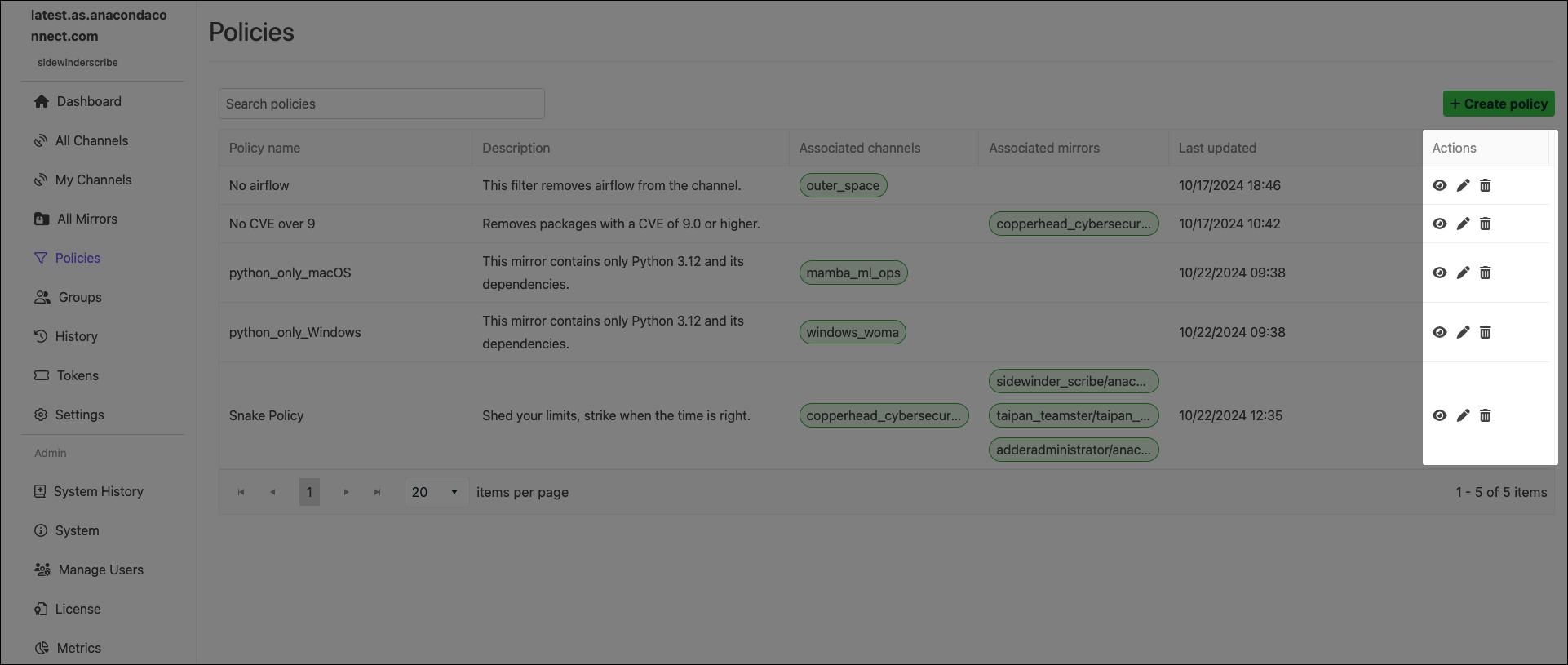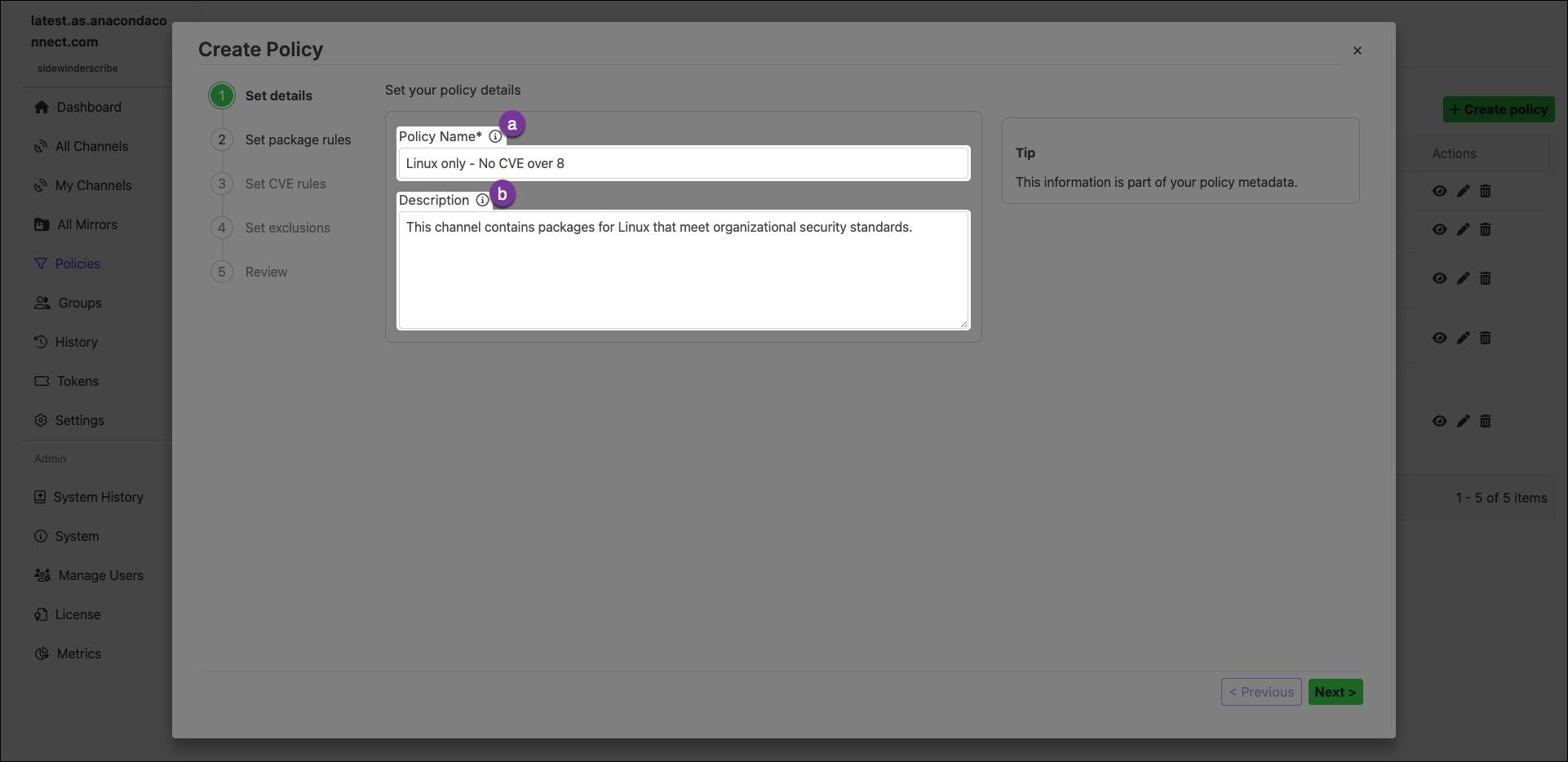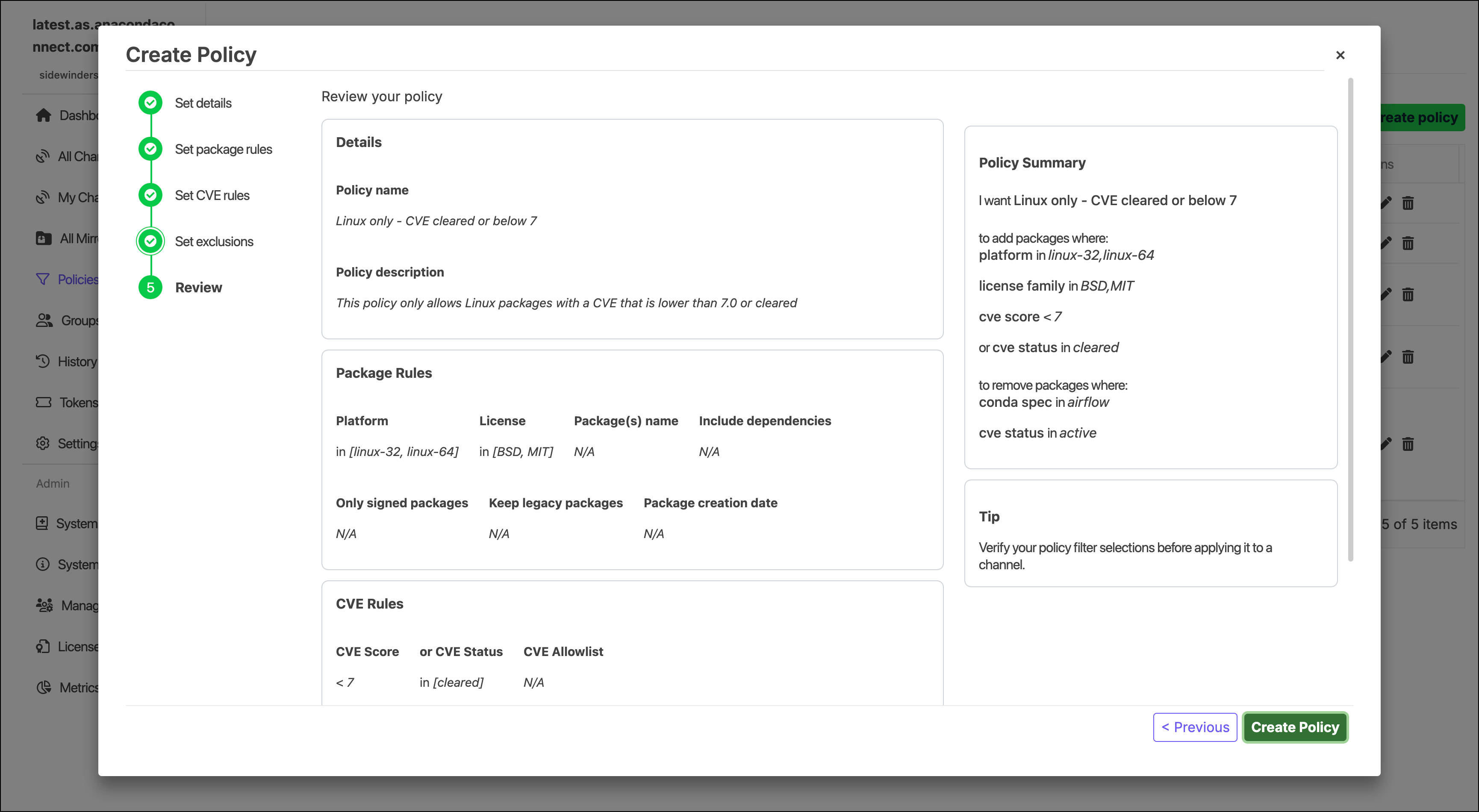Policies#
Caution
Policy filters only work for conda repositories.
A policy is a security control you can apply to a channel or mirror to restrict the packages users can source from them. Enforcing policies ensures that only approved software is available, helping maintain consistency across team environments and reducing security risks. Policies allow you to filter packages based on criteria such as package name, platform architecture, license, and Common Vulnerabilities and Exposures (CVE) score and status to meet your organization’s compliance and security requirements.
Creating a policy#
Note
Creating and applying policies is restricted to users whose role provides Manage permissions for the Policy Engine category.
Log in to Package Security Manager.
Select Policies from the left-hand navigation.
Click Create policy.
Complete the Create policy form.
Click Create Policy.
Create policy form#
The Create policy form provides a step-by-step approach to building policies for your channels and mirrors. Let’s take a look at the different sections of the Create policy form and what configurations they control:
Tip
Each section of the form provides a tip to help you understand and complete the process.
As you build the policy, a real-time summary appears on the right, explaining in plain language what the policy enforces.
Click Previous or Next to navigate the different sections of the Create policy form.
Set details
Set package rules
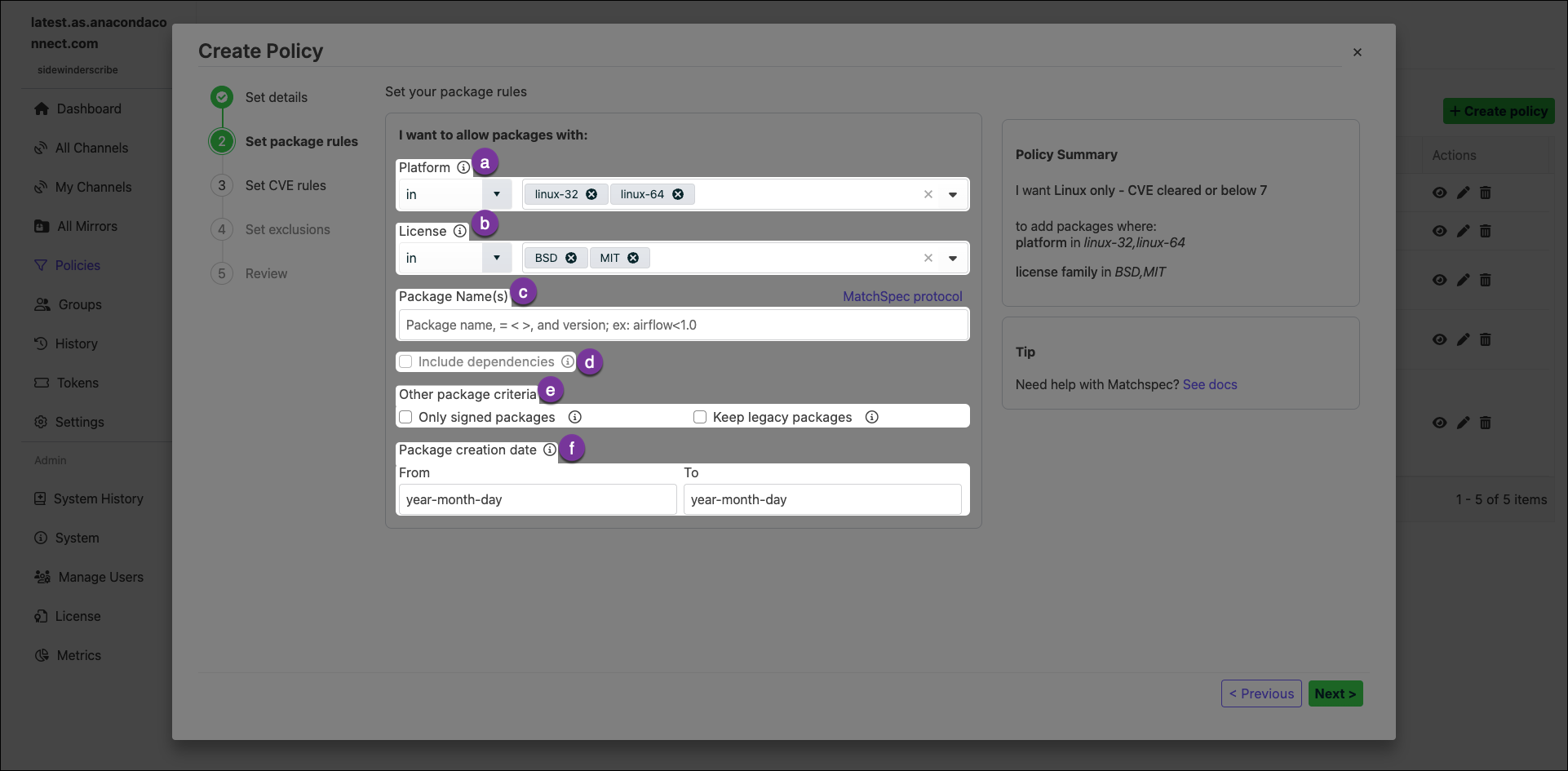
- Platform
Restrict packages based on their platform architecture.
Note
Package Security Manager automatically includes any
noarchpackage dependencies in your channel when you apply a policy that restricts packages by platform architecture.
- License
Restrict packages based on their license type. Multiple license types can be specified for the policy. For more information on licenses, see License types.
- Package Name(s)
If you know the specific packages you want your channel or mirror to contain, enter their names here.
Caution
Specifying packages by name does not automatically populate the channel with their dependencies.
- Include dependencies
Select this checkbox to include dependencies for the packages specified in the Package name(s) field.
Other package criteria
- Only Signed Packages
Select this checkbox to only mirror packages that have Anaconda signatures from the source mirror.
- Legacy Packages
Select this checkbox to include
.tar.bz2package files along with.condafiles for packages. This effectively doubles your required storage space.Note
When left unselected, if
.tar.bz2files are the only ones available in the source, they are included.
- Date Range
Instruct the policy to only include packages that were created within the range selected.
Set CVE rules
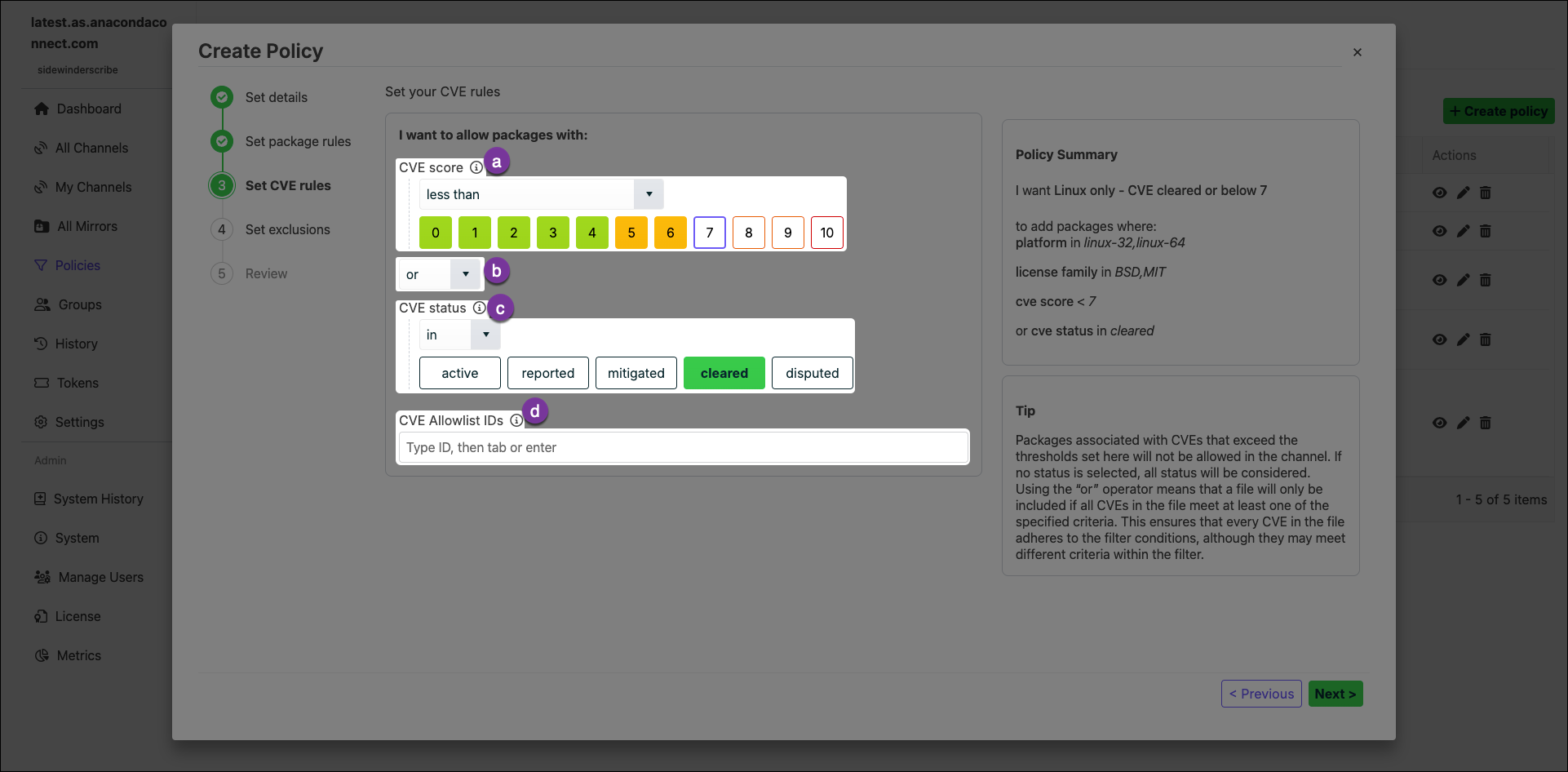
- CVE Score
Restrict packages based on their associated CVE Scores.
- and/or
The and operator includes package files that meet all the specified criteria.
The or operator includes package files that meet at least one of the specified criteria.
- CVE Status
Restrict packages based on their associated CVE Status.
- CVE Allowlist IDs
CVEs listed here are not considered for package file filtering criteria.
Set exclusions
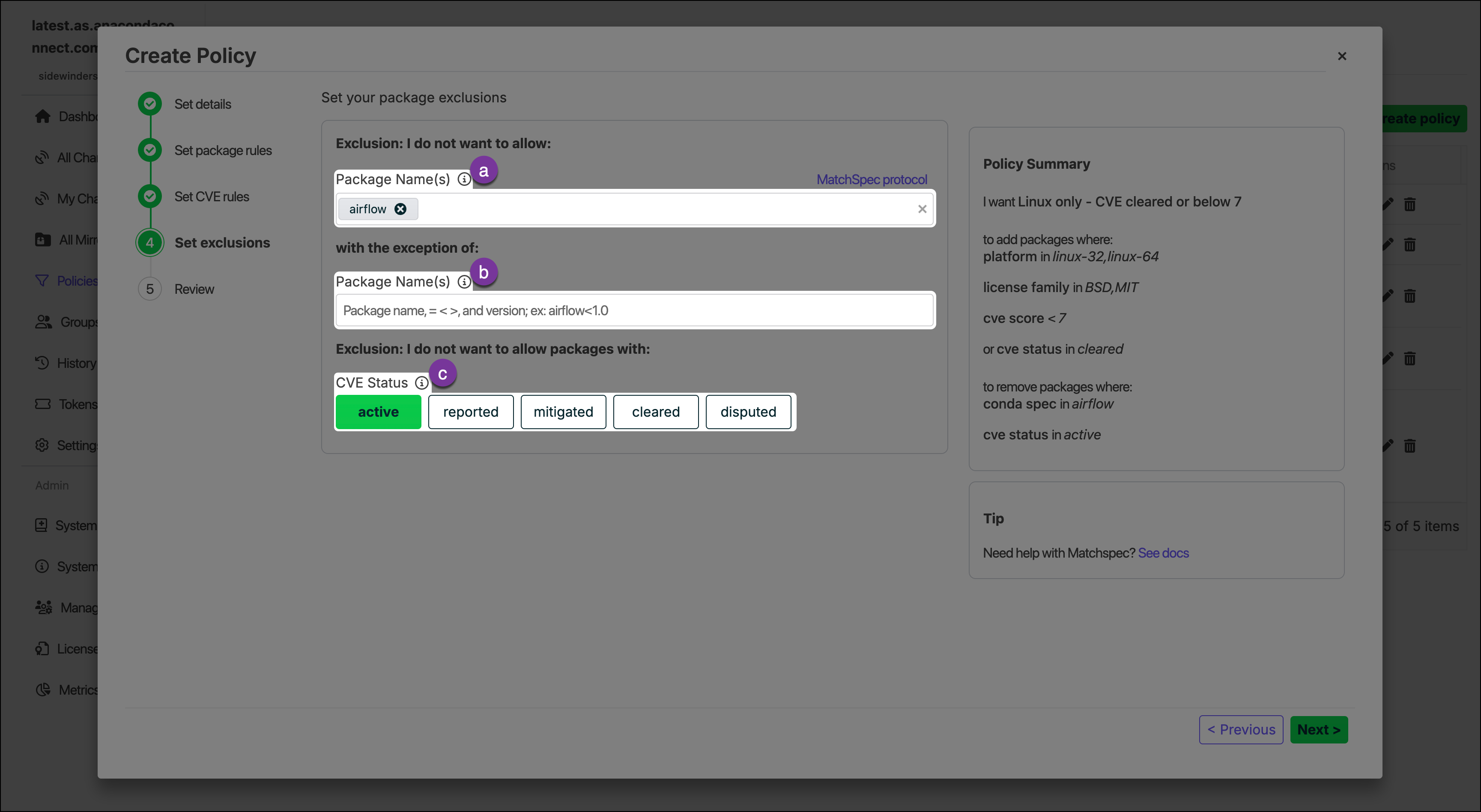
- Exclude Packages
Enter the name of any packages you want to exclude. To list multiple packages, press the Tab key after entering each package name.
- Exclusion exceptions
Include specific packages that would otherwise be removed by the exclude packages filter by listing them here.
- CVE Status
Choose to restrict packages by CVE Status.
Note
Packages can be excluded and included against non-exact values by including wildcard * and >/< ranges (where supported).
For example, if you choose to exclude the package
p*, Package Security Manager excludes all packages that start with the letter “p”. For more information about using non-exact value search queries, see Package match specifications in the official conda documentation.
Review
Managing policies#
Select Policies from the left-hand navigation to view all policies and which channels and mirrors they are associated with.
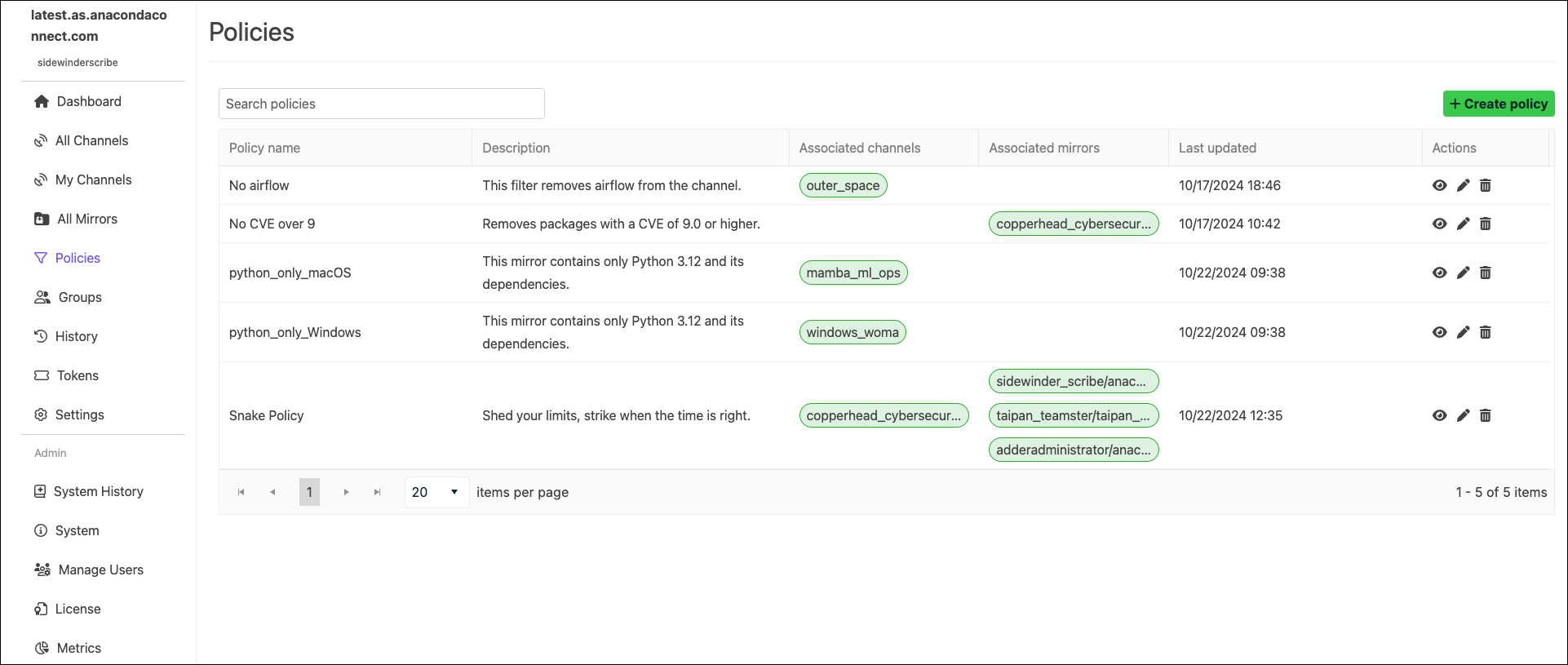
Tip
Use the search box to locate a policy by name.
Policy actions#
Use the icons in the Actions column to manage your policies. You can view, edit, or delete your organization’s policies, as well as search for specific policies and see their assigned channels and descriptions.
